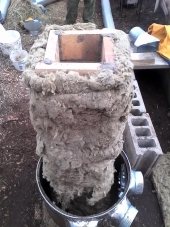








Success has a Thousand Fathers , Failure is an Orphan
LOOK AT THE " SIMILAR THREADS " BELOW !














Success has a Thousand Fathers , Failure is an Orphan
LOOK AT THE " SIMILAR THREADS " BELOW !





God of procrastination https://www.youtube.com/watch?v=q1EoT9sedqY




tel jetson wrote:is splitting the duct into several shorter runs a workable solution to too many turns?
Ernie Wisner wrote:Splitting the ducting into smaller diameter is a very tricky thing to do. each split off handles a different amount of flow unless it is done just right and the flow is totally constant where you split it off.; laminar flow can and will bite you if anything is slightly off.
not generally something i suggest even at the best of times. I would not do it unless i had a really really good reason for it; introduces to many variables.
Glenn Herbert wrote:From all I have heard, splitting the ducts in a RMH seldom works well, or at least easily. One always predominates and takes more of the flow and heat. If you have some way of restricting the one that heats more, then you could fine-tune the system with experience. You might have problems with too much restriction unless you are very careful.
Xisca - pics! Dry subtropical Mediterranean - My project
However loud I tell it, this is never a truth, only my experience...


















Success has a Thousand Fathers , Failure is an Orphan
LOOK AT THE " SIMILAR THREADS " BELOW !




allen lumley wrote:
Now when people start comparing flowing water to electricity, I nod my head all through the careful explanation -and find out 15 min later I cant repeat what i just heard

|
I brought this back from the farm where they grow the tiny ads:
Learn Permaculture through a little hard work
https://wheaton-labs.com/bootcamp
|




